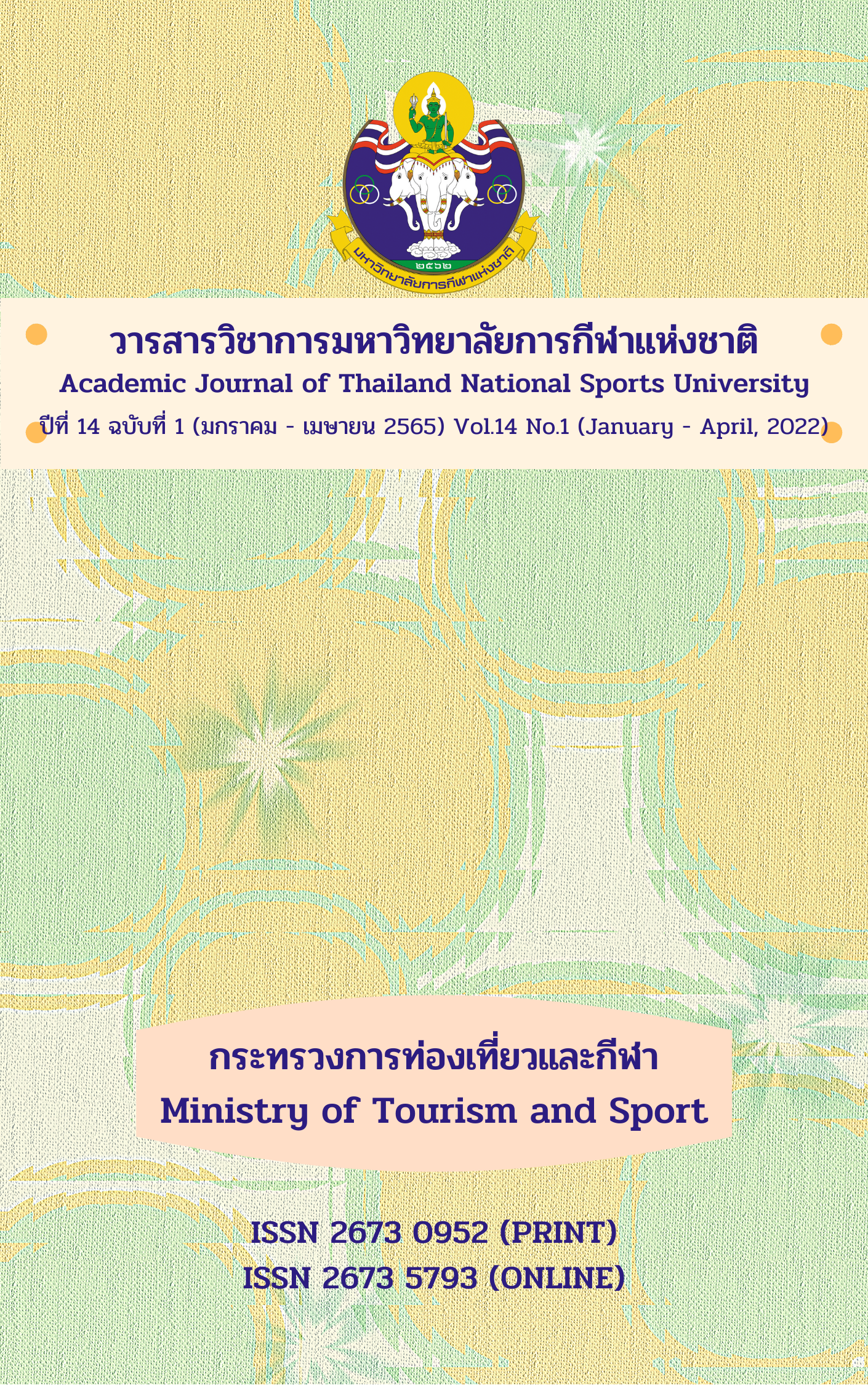INVESTIGATING THE INFLUENCE OF ACTN3 R577X POLYMORPHISM ON ANGULAR KINEMATICS USING MOTION CAPTURE TECHNOLOGY
Main Article Content
Abstract
ACTN3 has been labeled as the ‘gene for speed’ due to the increased frequency of the R allele encoding the α – actinin - 3 protein in elite sprint athletes compared to the general population. In situ muscle fibers that express α – actinin - 3 protein can produce more force than the muscle fibers that are α – actinin - 3 deficient (ACTN3 XX genotype). In vivo, using single joint isokinetic dynamometry assessments individuals with ACTN3 RR genotype demonstrated higher peak torque at all angular speeds (30 - 180o/s) than those with ACTN3 XX genotype. However, no study so far has investigated the influence of the ACTN3 gene on angular velocity and acceleration during vertical jumps using motion capture technology. The aim of this study was to investigate the influence of the ACTN3 gene on Squat Jump (SJ), by comparing maximal angular velocity and acceleration in hip and knee joint between ACTN3 RR and ACTN3 XX homozygotes. The biomechanical data were obtained using Qualisys Track Manager (QTM) motion analysis system and the DNA was isolated from white blood cells. The 291 - bp PCR fragment was electrophoresed, visualized in UV light and finally digested with Hpy8 restriction endonuclease. No statistically significant differences were observed; However, ACTN3 RR homozygotes demonstrated a trend towards higher maximal angular velocity and acceleration at take-off during SJ jumps (RR 4533.61 ± 1067.62 deg/s2 vs. XX 3183.53 ± 1695.99 deg/s2) in hip joint compared to their ACTN3 XX counterparts. This study suggests that more participants are required to investigate the potential underlying ACTN3 gene effect on angular kinematics during explosive movements such as vertical jumps.
Article Details

This work is licensed under a Creative Commons Attribution-NonCommercial-NoDerivatives 4.0 International License.
The published article is a copyright of the Academic Journal of Thailand National Sports University. The passage appeared in each article in this academic journal is a perspective of each author which is not related to the journal. Each author is required to be responsible for all components of his/her own article. If there are any mistakes, each author must be responsible for those mistakes on his/her own.
References
Broos, S., Malisoux, L., Theisen, D., van Thienen, R., Ramaekers, M., Jamart, C., Deldicque, L., Thomis, M. A., & Francaux, M. (2016). Evidence for ACTN3 as a speed gene in isolated human muscle fibers. PLoS One, 11(3). doi:10.1371/journal.pone.0150594
Broos, S., Van Leemputte, M., Deldicque, L., & Thomis, M. A. (2015). History - dependent force, angular velocity and muscular endurance in ACTN3 genotypes. Eur J Appl Physiol, 115(8), 1637 - 1643. doi:10.1007/s00421-015-3144-6
Burke, L., Cort, M., Cox, G., Crawford, R., Desbrow, B., Farthing, L., Minehan, M., Shaw, N., & Warnes, O. (2006). Supplements and Sports Foods (3rd ed.). Sydney, Australia: McGraw-Hill Education.
Garatachea, N., Verde, Z., Santos-Lozano, A., Yvert, T., Rodriguez-Romo, G., Sarasa, F. J., Hernandez-Sanchez, S., Santiago, C., & Lucia, A. (2014). ACTN3 R577X polymorphism and explosive leg-muscle power in elite basketball players. Int J Sports Physiol Perform, 9(2), 226 - 232. doi:10.1123/ijspp.2012-0331
Lander, E. S., et al. (2001). Initial sequencing and analysis of the human genome. Nature, 409.
Niemi, A.-K., & Majamaa, K. J. E. J. o. H. G. (2005). Mitochondrial DNA and ACTN3 genotypes in Finnish elite endurance and sprint athletes. Eur J Hum Genet, 13(8), 965 - 969.
North, K. N., Yang, N., Wattanasirichaigoon, D., Mills, M., Easteal, S., & Beggs, A. H. J. N. g. (1999). A common nonsense mutation results in α-actinin-3 deficiency in the general population. Nat Genet, 21(4), 353 - 354.
Papadimitriou, I. D., Eynon, N., Yan, X., Munson, F., Jacques, M., Kuang, J., Voisin, S., North, K. N., & Bishop, D. J. (2019). A "human knockout" model to investigate the influence of the alpha-actinin-3 protein on exercise-induced mitochondrial adaptations. Sci Rep, 9(1), 12688. doi:10.1038/s41598-019-49042-y
Papadimitriou, I. D., et al. (2016). ACTN3 R577X and ACE I/D gene variants influence performance in elite sprinters: A multi-cohort study. BMC Genomics, 17, 285. doi:10.1186/s12864-016-2462-3
Papadimitriou, I. D., Papadopoulos, C., Kouvatsi, A., & Triantaphyllidis, C. (2008). The ACTN3 gene in elite Greek track and field athletes. Int J Sports Med, 29(4), 352 - 355. doi:10.1055/s-2007-965339
Papadopoulos, C., Sambanis, M., Gissis, I., Noussios, G., Gandiraga, E., Manolopoulos, E., & Papadimitriou, D. I. (2009). Evaluation of force and vertical jump performance in young swimmers with different force-time curve characteristics. Biology of Sport, 26(4), 301 -307. doi:10.5604/20831862.901135
Robert, F., & Pelletier, J. (2018). Exploring the impact of single - nucleotide polymorphisms on translation. Front Genet, 9, 507. doi:10.3389/fgene.2018.00507
Ruiz, J. R., Fernandez del Valle, M., Verde, Z., Diez-Vega, I., Santiago, C., Yvert, T., Rodriguez -Romo, G., Gomez-Gallego, F., Molina, J. J., & Lucia, A. (2011). ACTN3 R577X polymorphism does not influence explosive leg muscle power in elite volleyball players. Scand J Med Sci Sports, 21(6), e34 - e41. doi:10.1111/j.1600-0838.2010.01134.x
Thomas, S., Reading, J., & Shephard, R. J. (1992). Revision of the physical activity readiness questionnaire (PAR - Q). Can J Sport Sci, 17(4), 338 - 345.
Walsh, S., Liu, D., Metter, E. J., Ferrucci, L., & Roth, S. M. (2008). ACTN3 genotype is associated with muscle phenotypes in women across the adult age span. J Appl Physiol (1985), 105(5), 1486 - 1491. doi:10.1152/japplphysiol.90856.2008
Willems, S. M., et al. (2017). Large-scale GWAS identifies multiple loci for hand grip strength providing biological insights into muscular fitness. Nat Commun, 8, 16015. doi:10.1038/ncomms16015
Yang, N., MacArthur, D. G., Gulbin, J. P., Hahn, A. G., Beggs, A. H., Easteal, S., & North, K. J. T. A. J. o. H. G. (2003). ACTN3 genotype is associated with human elite athletic performance. Am J Hum Genet, 73(3), 627 - 631.


